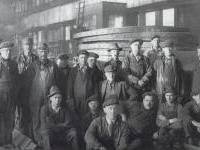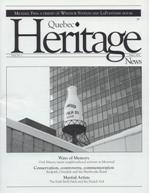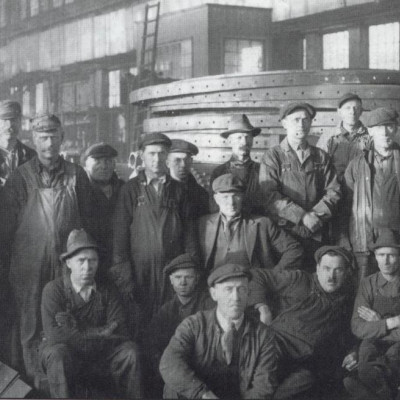 The Story of Sherbrooke's Ingersoll - Rand, commonly just called the Rand, is not only the history of a prolific industry, but a glimpse into the lives of the thousands of men and women who worked there. In Sherbrooke, almost everyone knows someone who worked in the sprawling west-end shops of the Rand. Taking its current name in 1910, the Rand sparked the growth of an entire neighbourhood and was for decades the catalyst for countless feasts, frolics and family fun. As any Rand alum will attest, the Rand was like a family.
The Story of Sherbrooke's Ingersoll - Rand, commonly just called the Rand, is not only the history of a prolific industry, but a glimpse into the lives of the thousands of men and women who worked there. In Sherbrooke, almost everyone knows someone who worked in the sprawling west-end shops of the Rand. Taking its current name in 1910, the Rand sparked the growth of an entire neighbourhood and was for decades the catalyst for countless feasts, frolics and family fun. As any Rand alum will attest, the Rand was like a family.
A Century of Manufacturing
At the end of the 1830s, Sherbrooke was seeing the first signs of the Industrial Revolution. The Sherbrooke Cotton Mills, Canada’s first cotton plant, was founded there in 1837, and other factories began to spring up on the shores of the Magog River, a key location for the city’s development. In 1851, the first Sherbrooke company to use compressed air in manufacturing, the Jenckes Machine Company, was founded (though it would only be named the Jenckes as of 1888).
Throughout the 1870s and 1880s, the Jenckes Company rode the mining boom, specializing in winches and drills, and many others followed suit: the Ingersoll Rock Drill Company of Canada was established in 1882, and the Canadian Rand Drill opened a branch on Bank Street in 1889, producing mining equipment for operations in the region and across the country.
The first Rand shops were modest, but by 1896 the company had outgrown its Bank Street location and the small factory moved to Lansdowne Street. A fire three years later proved to have a silver lining when the Rand moved again to set up shop near Courcellette, in the west end, where its proximity to the Canadian Pacific station meant inexpensive exports for the Rand’s heavy machinery.
Throughout the twentieth century, as the company prospered, additional buildings were erected and existing shops were expanded to include a foundry and metal-pressing, drilling and machining shops. In 1912, the Rand merged with the Ingersoll Rock Drill Company. By the 1930s, the Rand complex covered over 30 acres and, at its peak, had approximately 50 buildings. What exactly was going on inside those buildings?...
 *SUBSCRIBE NOW!
*SUBSCRIBE NOW!
The complete version of this article appeared in Quebec Heritage News, Vol. 6, Number 1, Spring 2011. For back issues of Quebec Heritage News, or to order a subscription to this magazine, call QAHN at (819) 564-9595, or at [email protected].
